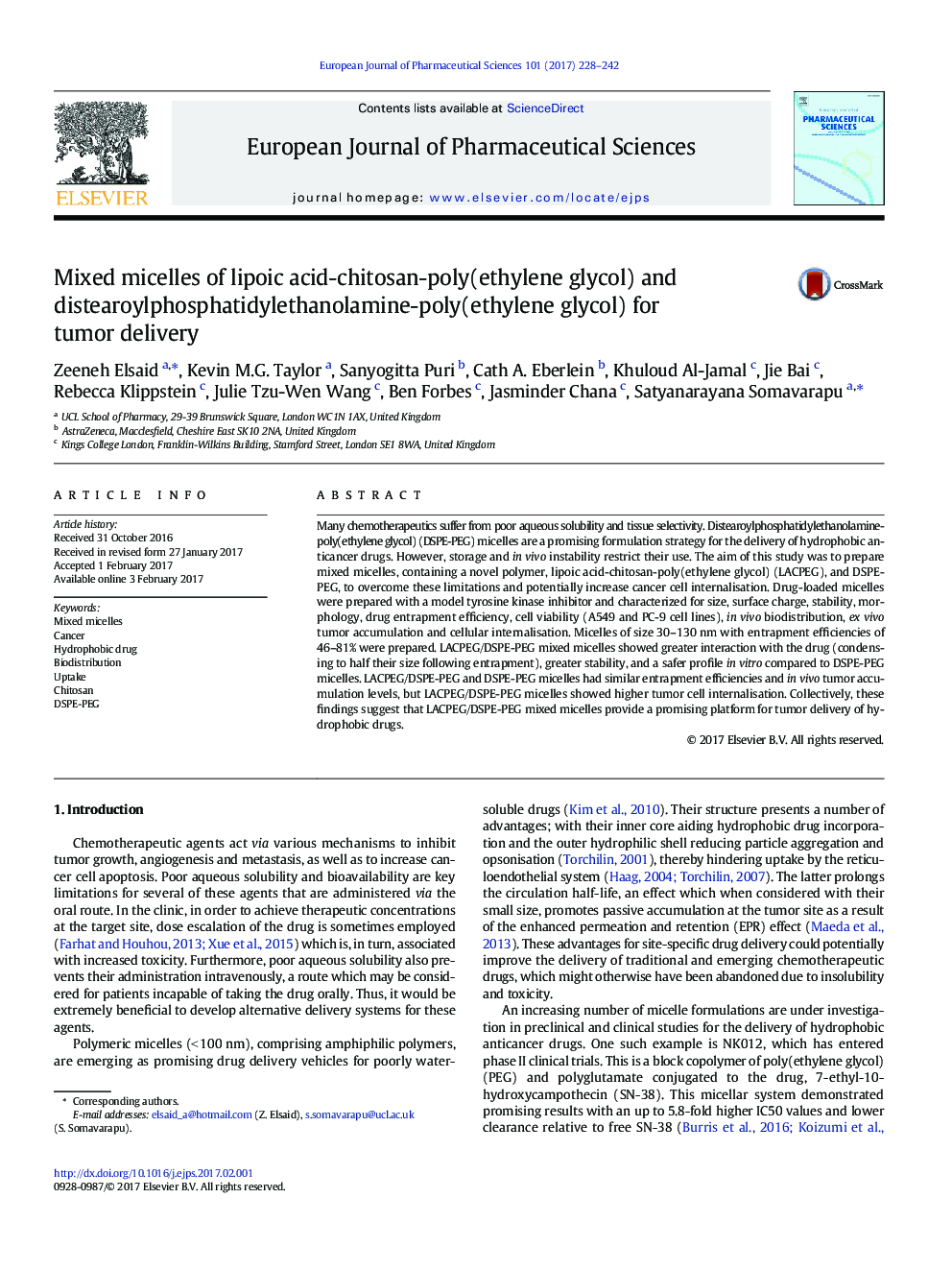| Article ID | Journal | Published Year | Pages | File Type |
|---|---|---|---|---|
| 5547675 | European Journal of Pharmaceutical Sciences | 2017 | 15 Pages |
Many chemotherapeutics suffer from poor aqueous solubility and tissue selectivity. Distearoylphosphatidylethanolamine-poly(ethylene glycol) (DSPE-PEG) micelles are a promising formulation strategy for the delivery of hydrophobic anticancer drugs. However, storage and in vivo instability restrict their use. The aim of this study was to prepare mixed micelles, containing a novel polymer, lipoic acid-chitosan-poly(ethylene glycol) (LACPEG), and DSPE-PEG, to overcome these limitations and potentially increase cancer cell internalisation. Drug-loaded micelles were prepared with a model tyrosine kinase inhibitor and characterized for size, surface charge, stability, morphology, drug entrapment efficiency, cell viability (A549 and PC-9 cell lines), in vivo biodistribution, ex vivo tumor accumulation and cellular internalisation. Micelles of size 30-130Â nm with entrapment efficiencies of 46-81% were prepared. LACPEG/DSPE-PEG mixed micelles showed greater interaction with the drug (condensing to half their size following entrapment), greater stability, and a safer profile in vitro compared to DSPE-PEG micelles. LACPEG/DSPE-PEG and DSPE-PEG micelles had similar entrapment efficiencies and in vivo tumor accumulation levels, but LACPEG/DSPE-PEG micelles showed higher tumor cell internalisation. Collectively, these findings suggest that LACPEG/DSPE-PEG mixed micelles provide a promising platform for tumor delivery of hydrophobic drugs.
Graphical AbstractDownload high-res image (215KB)Download full-size image
